Photography Experiment: Grey Card White Balance
Cameras, even high-end ones, have trouble capturing accurate colors at night. This arises because the camera can't distinguish between yellow light reflected off a white surface and white light reflected off a yellow surface. Both are yellow by the time they reach the camera, so how can the camera distinguish them? The solution is to use a grey card, a neutral reference point. How well does it work in practice?
Here's the original photo, out of camera:
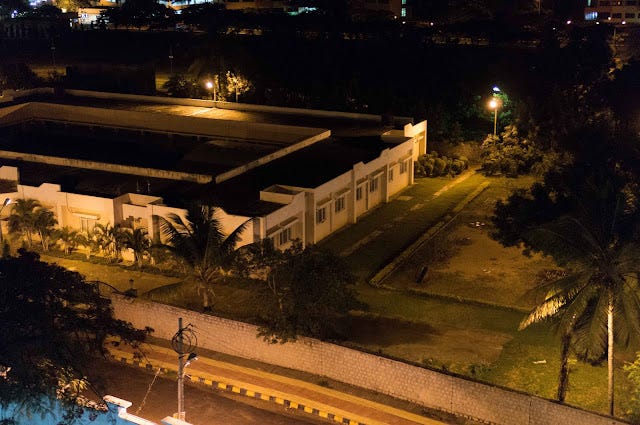
I wanted to check if Lightroom can do a better job than the camera:
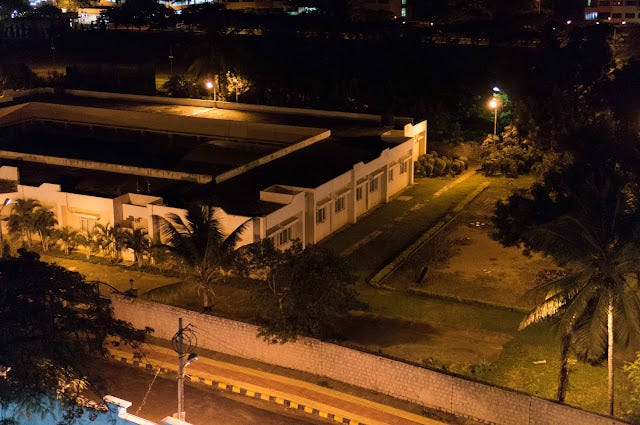
This has become more reddish, with a lower color temperature. Neither of the two photos captures colors accurately, as it looked to the naked eye.
So I tried using a grey card:
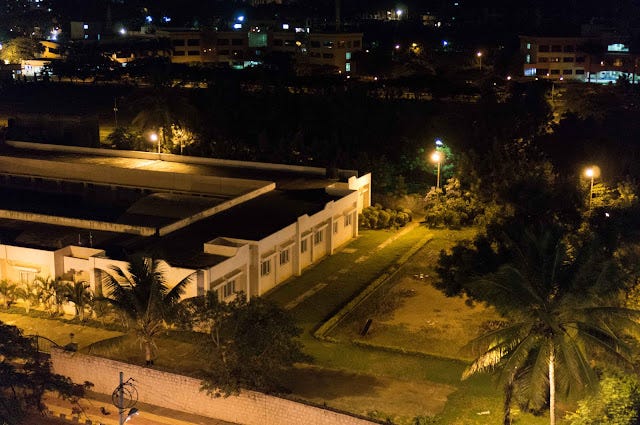
This is much better — an accurate representation of the shade of yellow (not orange) in the scene.
Here's another example, first in-camera:
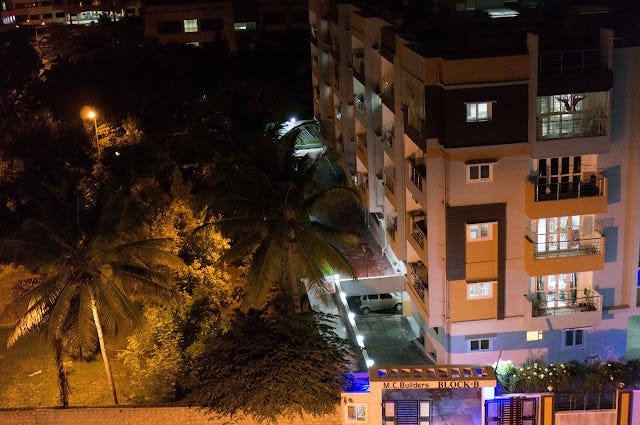
And with a grey card:
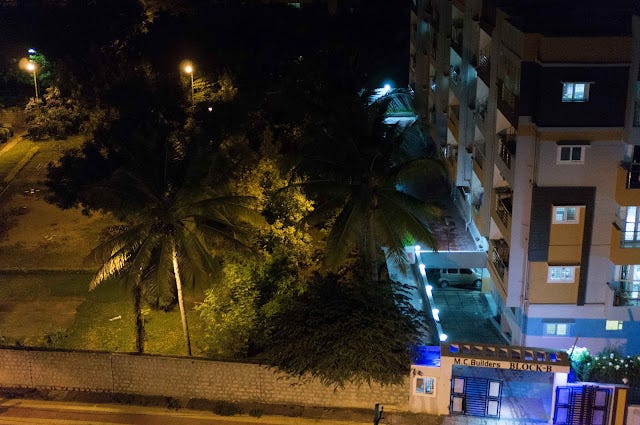
With the grey card, colors are again truer to how the scene looked to the naked eye. Compare the area around the coconut tree, to the left. The auto color-balanced photo had an orange cast, while the grey card photo is lit in an accurate yellow.
If you're doing night photography, and you have the time, using a grey card.



